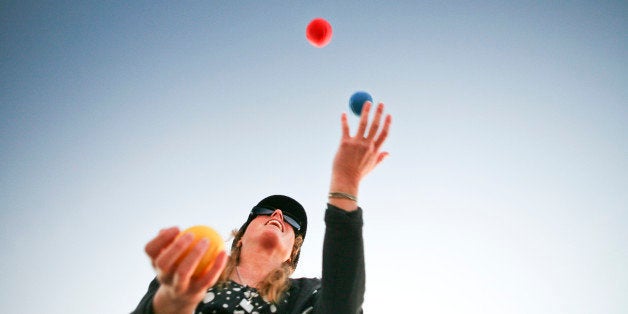
Research on juggling is giving scientists a better understanding of how we're able to do "no-brainer" activities like walking and running.
A new study in the Journal of Neurophysiology shows that touch sensation, also known as haptic feedback, plays an important role in maintaining the rhythm that is integral to juggling.
"The haptic sensation is just a tiny bit of feedback that's provided once per juggling cycle," study researcher Noah Cowan, an associate professor of mechanical engineering at Johns Hopkins University, said in a statement. "Yet that tiny bit of information seems to be critical for people to improve their juggling performance. We think that's because while vision provides excellent spatial and positioning information, the haptic information provides very important timing information."
For the study, researchers had study researchers engage in virtual juggling. The participants held a physical paddle that was connected to a computer. They bounced a virtual ball on the computer screen between two target lines. Some of the participants, when hitting the virtual ball with their paddles, also received some actual sensory feedback -- what it would feel like if a real-life ball actually hit their paddle -- while other participants did not receive this sensation.
Researchers found that the participants who had the touch sensation made fewer mistakes -- about half as many as those who didn't have the touch sensation. However, the touch sensation didn't seem to affect their ability to correct a juggling error.
The findings apply to locomotive tasks like walking and running, since touch sensation is also vital to doing these repetitive movements, researchers said.